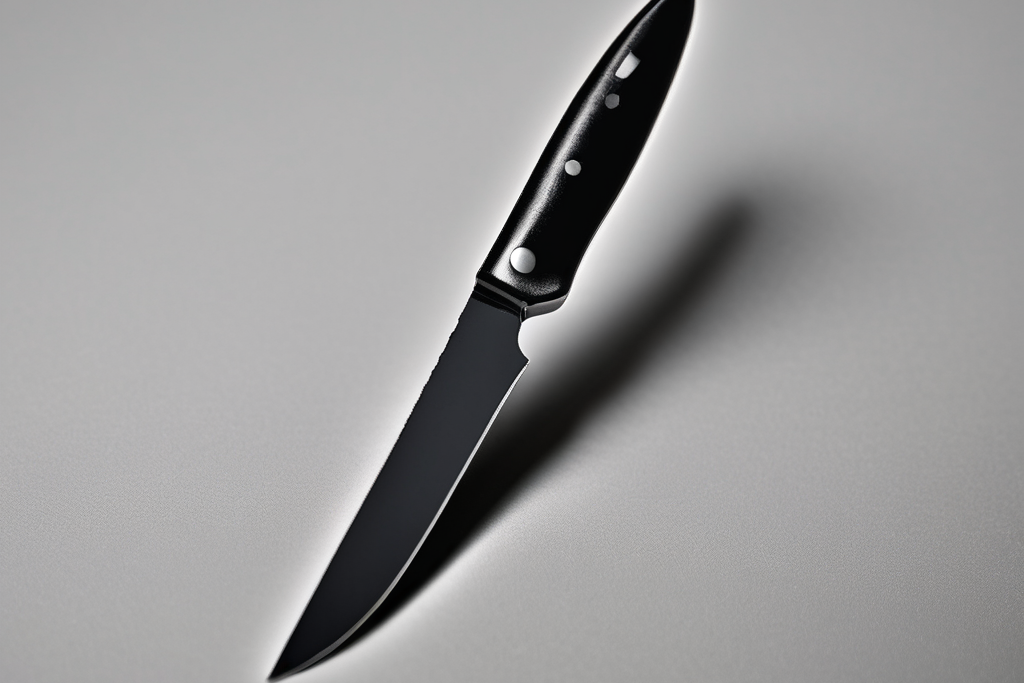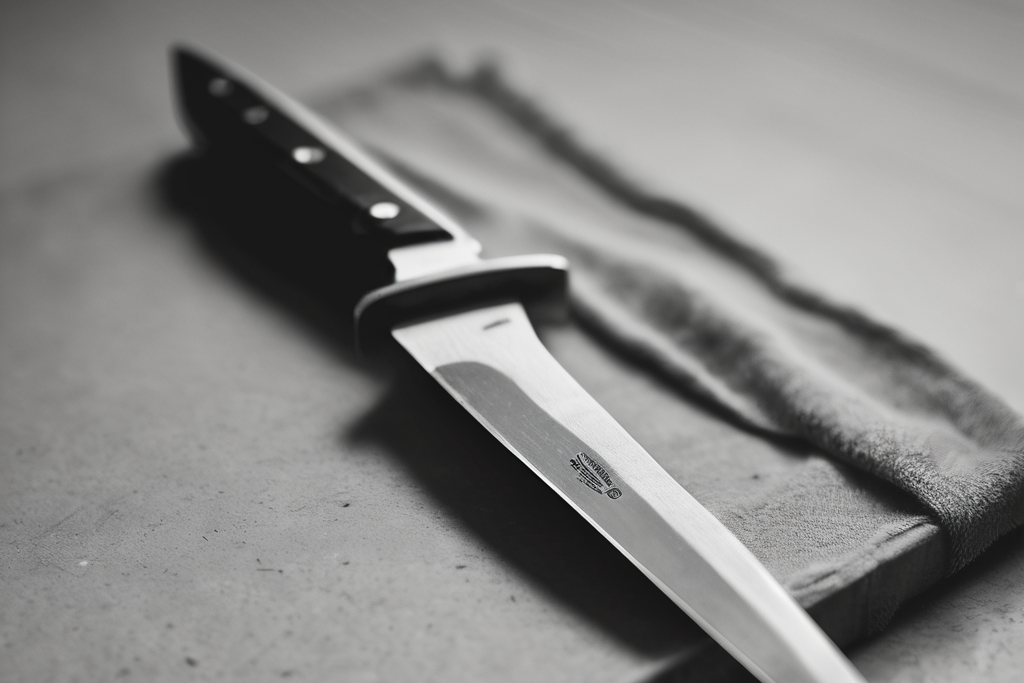Sharp knives are an essential component of any proficient kitchen, impacting everything from food preparation safety to culinary efficiency and enjoyment. Understanding knife sharpness can significantly enhance your cooking experience.
What Is Knife Sharpness?
Knife sharpness refers to the ability of the blade to cut smoothly and efficiently through material-be it food, fabric, or otherwise-with minimal force. The sharpness of a knife is determined by the geometry and finishing of its edge. A sharper knife will have a thinner edge, while a duller knife will have a thicker, more blunted edge.
At a microscopic level, a knife edge is a series of fine teeth formed from the steel of the blade. These teeth must be fine enough to cut through the structure of the material being sliced. The angle of the edge, known as the bevel angle, also plays a critical role. A smaller angle can make the blade sharper but also more fragile. Common angles range from 10 degrees for delicate slicing knives to 20 degrees for rugged chopping knives.

Factors Influencing Knife Sharpness
- Material: The type of steel or other materials (like ceramic or even obsidian) affects how sharp a knife's edge can be and how long it can retain that sharpness. For instance, ceramic knives can be honed to a very fine edge due to their hard material.
- Edge Angle: The angle of the blade's edge also significantly affects sharpness. Sharper angles can be honed finer but may be less durable. Typical chef's knives have edge angles around 15-20 degrees per side, while razor blades can have angles as small as 10 degrees or less.
- Manufacturing Precision: Advances in manufacturing technology, like laser cutting and precision forging, allow for extremely sharp edges that are also consistent and durable.
- Sharpening Techniques: How a knife is sharpened, including the tools and techniques used (like whetstones, honing rods, and strops), affects its ultimate sharpness. Finer abrasives produce sharper edges.
How to Test If Your Knife Is Sharp or Dull
- Paper Test: Secure a standard sheet of printer paper in one hand by its upper edge. With the other hand, use the knife to attempt a vertical cut starting from the top edge. The sharpness is indicated by the knife's ability to slice through the paper smoothly and without tearing. A sharp knife should not snag or drag as it cuts down through the paper.
- Tomato Test: Take a ripe tomato and place it on a stable surface without holding it. Use the knife to lightly touch the tomato's skin and then proceed with a slicing motion. If the knife is sharp, it will cut into the tomato with minimal pressure, slicing through the skin and flesh cleanly. A dull knife will require additional force, potentially squashing the tomato before penetrating the skin.
- Thumb Test: Perform this test with extreme caution. Place your thumb gently against the knife's edge, perpendicular to the blade, and lightly feel for the edge without sliding your thumb along it. A sharp knife will have a consistent, uninterrupted edge that you can feel catching slightly on your skin. There should be no smooth or rounded sections, which typically indicate dullness.
- Onion Test: Use an onion to further evaluate sharpness. A sharp knife will make clean cuts that allow for precise control over the thickness of each slice. During the cut, the onion should not be crushed or squished; instead, it should retain its shape, which demonstrates that the knife is slicing through cleanly with little downward pressure.
- Nail Test: Gently press the edge of your knife against your fingernail, perpendicular to the nail, without moving the knife back and forth. A sharp knife will slightly grip or catch on the nail, indicating a fine edge. Be cautious to avoid pushing too hard to prevent any risk of cutting yourself.
- Visual Inspection: Hold the knife under a strong light source and look directly along the edge. A well-sharpened blade should show a consistent, smooth, and fine edge without reflections. Any nicks, chips, or dull spots will typically reflect light differently and are visible indicators that the knife needs sharpening.

What are the Levels of Sharpness in Knives?
Knives can be categorized into several levels of sharpness, each suited for different tasks and handling characteristics in the kitchen:
- Utility Sharp: This level is adequate for general kitchen tasks such as slicing fruits, vegetables, and some meats. The edge is sharp enough to perform everyday tasks with ease but may struggle with tougher materials like thick rinds or dense meats. Ideal for home cooks who need reliable sharpness for routine preparation without the need for specialized cutting techniques.
- Professional Sharp: Found in high-quality kitchen and specialty knives, these blades are honed to a very fine edge that excels at precise cuts. They are designed to maintain this edge for a longer period through frequent use, resisting wear from tough materials. Best for professional chefs and serious home cooks who require exceptional precision in their slicing, dicing, and chopping, such as in fine julienne or brunoise cuts.
- Razor Sharp: This level of sharpness is comparable to a surgical blade, featuring an extremely acute edge angle that makes it exceptionally sharp but delicate. It is generally too sharp for regular kitchen tasks and can be prone to chipping if used improperly. Suitable for specialized culinary tasks that require the finest cuts, such as preparing sushi or sashimi, where the integrity of the ingredient's texture is paramount.
- Extra-Durable Sharp: Designed to handle heavy-duty tasks, these knives have a slightly less acute edge angle, which makes them less sharp than the professional or razor-sharp levels but much more durable. Ideal for butchering and cutting through tough materials like bone, squash, or hard cheeses. They are favored in settings where knives undergo extensive use on a variety of tough materials.
- Honed Sharp: This sharpness level is achieved through regular honing without the need for frequent full sharpening. Knives at this sharpness provide a good balance between edge retention and ease of maintenance. Suitable for everyday home use where the knife needs to perform well on both simple and moderately tough cutting tasks, offering a practical solution for maintaining sharpness.

How Sharp Can a Knife Be?
A knife can be honed to an edge that is just a few atoms thick, especially with the use of advanced materials and precise manufacturing techniques. Surgical scalpels, for instance, are incredibly sharp for precise medical work, while other specialized tools might employ even finer edges for specific applications.
Final Words
A sharp knife is more than just a tool-it is a testament to the art and science of culinary craft. Understanding the nuances of knife sharpness not only enhances the joy of cooking but also promotes kitchen safety. Whether you're a professional chef or a home cook, appreciating and maintaining the sharpness of your knives will lead to more enjoyable and efficient cooking experiences. Remember, a dull knife is not only ineffective but also dangerous, as it requires more force and can slip more easily during use. Keep your knives sharp, and they will help keep your cooking on point.
Read More
- EDC Knives New Arrival ARTISAN CUTLERY ANDROMEDA 1856G-FCMV M390 BLADE – Artisancutlery.net
- Folding Knives vs. Fixed Blades: Guide to Choosing the Right Knife! – Artisancutlery.net
- Folding Knives: A Guide to Choosing the Right One for You – Artisancutlery.net
- Artisan Cutlery: What's in your pocket? – Artisancutlery.net
- Mica Voting Contest Alert! – Artisancutlery.net
